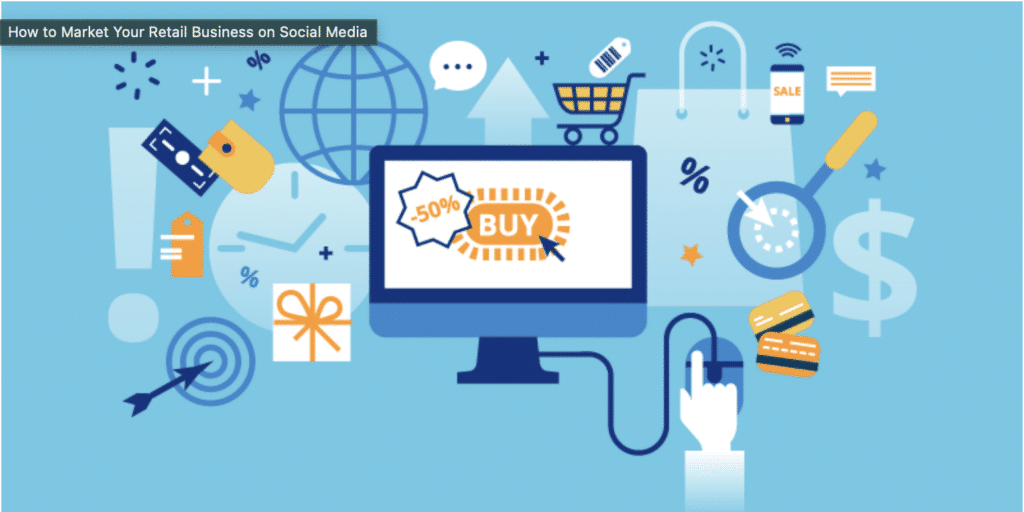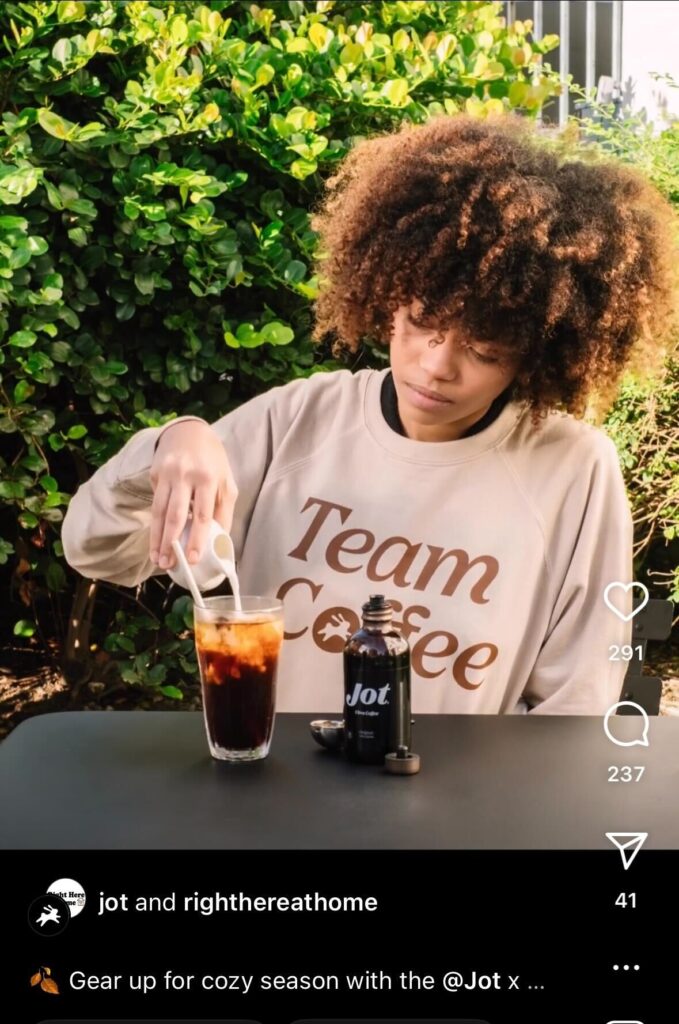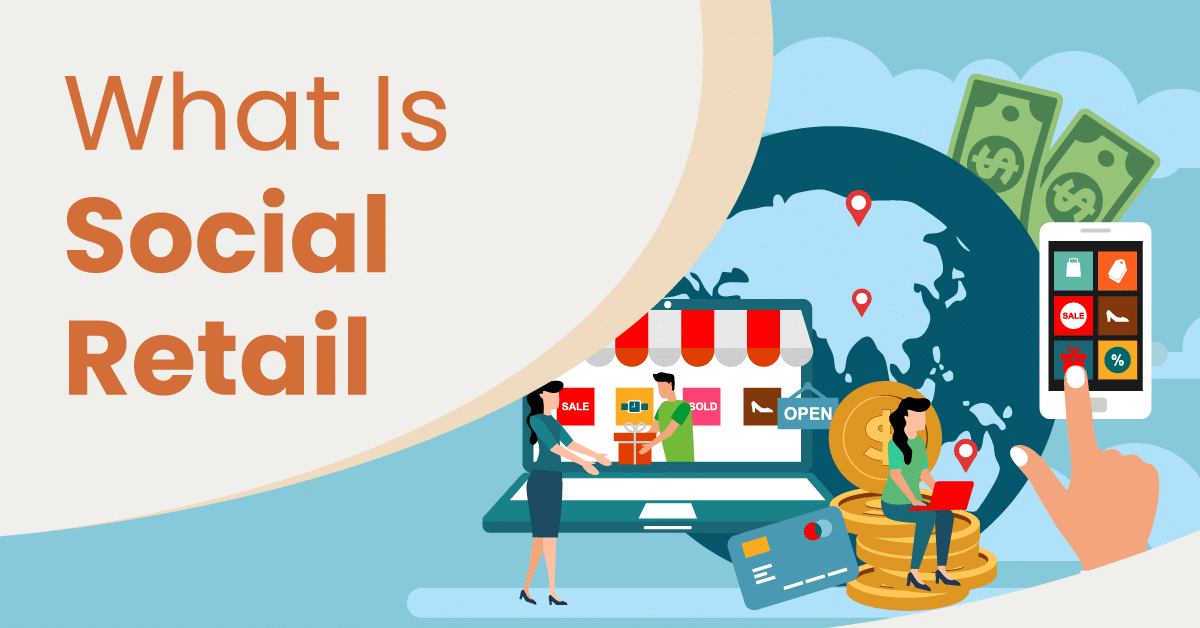
Social media has transformed the way consumers shop and engage with brands. Retailers who embrace social commerce and implement social retail strategies can better connect with customers, drive sales, and stand out from competitors.
In this guide, we’ll walk you through everything you need to know about launching a successful social retail campaign. You’ll learn how to choose the right social networks for your business, craft a social media content strategy your customers will love, run contests and promotions to increase engagement, and analyze the results to keep improving. These tips and examples provided apply to retailers of all types, from fashion to home decor and everything in between.
What is Social Retail?
Social retail refers to the use of social media platforms like Facebook, Instagram, Twitter, and TikTok to engage customers, promote products, and drive sales. It encompasses both organic social media marketing and paid advertising. The goal is to meet consumers who already spend time online and turn them into loyal customers.
A recent report shows that across the globe, people spend a whole lot of time on social media. On average, people use social media apps and websites for 2 hours and 27 minutes daily. That accounts for over one-third of the total time people spend on the internet daily. And people don’t just use one social media app – on average, people visit 7 or 8 social media platforms monthly. Those are some pretty remarkable statistics.
In 2022, a survey revealed that Facebook is the number one social media shopping platform in the United States. While younger people shop online more, the Facebook marketplace is popular among every age demographic. In fact, almost 1 in 5 online shoppers in the US said they’ve bought something on Facebook. This is more than those who said they shopped on Instagram (12%) or YouTube (9%).
The average retail social commerce sale per shopper in the United States is expected to be over $640 per year in 2023. And that amount is expected to jump to almost $937 in just two years.
Social media is becoming very popular for holiday shopping, too. A recent survey found that 1 in 3 people will use social media for holiday shopping. 70% of Americans said they’ve used at least one social media site to find inspiration for holiday gifts. And over half of Gen Z and millennials will shop for the holidays on social media.
Why You Should Leverage Social Retail
There are several key reasons why social retail is critical for modern retailers:
Increased brand awareness: Social platforms allow retailers to get their brands and products in front of a massive audience. Creative and engaging content improves visibility and spreads brand awareness.
Social proof: User-generated social content like reviews, tags, and shares build trust and provide social proof of your brand’s quality. This organic advocacy is more authentic and meaningful than branded content.
Improved customer engagement: Social platforms facilitate two-way conversations with customers. Retailers can provide personalized customer service, solicit feedback, and foster brand loyalty.
Competitive edge: In many industries, social presence is no longer optional. It’s expected of brands. Social retail keeps you competitive.
Valuable data: Social platforms provide data to inform marketing and product decisions. This includes demographic info, consumer insights, and measuring ROI.

Sales: Most importantly, social platforms enable sales directly through channels like Instagram and Pinterest. Converting social media followers into paying customers is the ultimate goal.
Tips for Developing Your Retail Social Media Strategy
When developing a social media strategy for retail, focus on these critical steps:
1. Define your social retail strategy and goals
Define what you want to achieve with your social retail strategy. Do you want to increase brand awareness, boost sales, improve customer service, or build community? Having concrete goals will help focus your efforts. Once you know your objectives, determine your target audience. Figure out which social platforms they frequent and the content that resonates with them.
2. Choose the Right Social Media Platforms for Your Business
Choosing the right social platforms for your business is vital. Focus on where your customers already are.
- Facebook is always a good option for retailers. Create a business page to share photos, run contests, and engage with customers. Start a group to build a community around your brand.
- Instagram is ideal if you have a visually appealing product. Post product photos, behind-the-scenes shots, and lifestyle images. Use hashtags to increase visibility and connect with new potential customers.
- Twitter can help you build awareness and connect with influencers. Share links to blog posts, promotions, events, and more. Engage with followers by replying to their tweets and messages.
TikTok and Snapchat are great for short-form video content for a younger demographic. Show how to use or style your products. Collaborate with influencers in your niche.
3. Create engaging content to share
To develop an effective social retail strategy, you need to create content that engages your audience and gives them a reason to connect with your brand.
Post valuable content
Share content that provides value to your followers:
- Product tips
- Style guides
- Behind-the-scenes footage
- Q&As with your team
This gives customers an inside look at your company and products. Post regularly to stay top of mind, but don’t overload people’s feeds. Aim for 3 to 5 posts per week.

Share authentic stories
Let your brand personality shine through by occasionally posting casual, behind-the-scenes stories or live videos. Show your employees hard at work or highlight a company event. This makes you more relatable and approachable.
Engage with followers
Respond to comments and questions on your posts. Ask open-ended questions to start discussions. Like and repost user-generated content featuring your products. Engaging with followers makes them feel like valued community members and keeps them returning.
Optimize for each channel
Tailor your content to match the style and audience of each social network. Use lots of visuals on Instagram and Facebook, share quick tips on Twitter, and post video tutorials or reviews on YouTube. Optimizing your content will lead to higher engagement and a better user experience on each channel.
4. Respond to Customer Reviews and Mentions
Responding to customer reviews and social media mentions is critical to developing a successful social retail strategy. When customers take the time to review your products or mention your brand on social media, you need to engage with them.
Thank the customer
Always thank the customer for their review or mention, whether positive or negative. For positive reviews, let them know their feedback is appreciated and helps your brand. For negative reviews, thank them for bringing the issue to your attention so you can improve.
Address any concerns
If there are any concerns or complaints in a negative review or social media mention, address them promptly and professionally. Apologize for their poor experience and let them know you will follow up to make things right. Follow through to resolve their issues. Your public responses will show other customers your commitment to excellent service.
Be authentic and timely
Respond to reviews and social mentions sincerely and authentically as soon as possible. Customers will appreciate your quick, genuine communication. Even if you can’t fully address the issue immediately, send an initial message to let the customer know you received their feedback and will get back to them.
5. Analyze and Optimize Your Efforts
Once you’ve built up your social media following and engagement, it’s time to analyze how your efforts pay off. Track key metrics like followers, likes, comments, shares, click-throughs, and conversions to see what’s working and not working.
Monitor your metrics
Check your metrics regularly to spot trends and make adjustments. See which posts get the most traction and double down on that type of content. Look for lulls in engagement to mix things up.
Small tweaks can lead to significant results. For example, experiment with different types of posts (images, video, blog links), times of day, frequency, and messaging. You might find that lifestyle shots perform better than product photos or that short “how-to” videos are more engaging than extended interviews. Don’t be afraid to pivot based on the data.
Continuously refine your strategy
A social retail strategy constantly evolves, so keep optimizing to stay ahead of trends and keep your followers interested. Make incremental improvements over time based on your metrics and audience feedback. With regular analysis and refinement, you’ll build a strategy that truly resonates.
6. Build a network of brand advocates
To build a loyal following of brand advocates, focus on the following:
- Hosting social media contests and giveaways. Run contests where customers share photos, stories, or shout-outs about your brand. Offer discounts, free products, or exclusive perks as prizes. This encourages advocacy and word-of-mouth promotion.
- Creating a brand ambassador program. Recruit loyal customers and social media influencers to represent your brand officially. Give them free product samples, discounts, and insider access in exchange for social posts, reviews, and recommendations. Set clear expectations and guidelines to keep the program authentic.
- Using social listening tools. Monitor social media mentions and online reviews to see what customers love about your brand. Look for common themes and leverage them in your marketing. Also, respond to any complaints or criticisms quickly. Addressing issues head-on builds goodwill and trust.
7. Make and keep an eye on campaign and brand-related tags
To develop an effective social retail strategy, you need to track how customers engage with your brand on social media. One of the best ways to do this is by monitoring campaign and brand-related tags.
Create unique customer hashtags when you run social media campaigns, contests, or promotions. Check these tags regularly to see who posts about your brand and what they say.
Also, track your standard brand tags like your business name, product names, or other common phrases customers may use. See which types of content and messages resonate most with your audience. Look for opportunities to start conversations and build relationships.
8. Run your omnichannel retail stores with the right POS system
To develop an effective social retail strategy, your point of sale (POS) system must seamlessly integrate your online and in-store channels into a unified commerce experience. Shop for the right point of sale the checks the following boxes:
- Offers an omnichannel platform to manage your retail operations across all channels in one place. This provides a single view of customer data, inventory, and transactions regardless of channel.
- Provides tools for centralized inventory management across your stores and eCommerce site. This ensures customers have a consistent experience with your brand and products wherever they shop.
- Offers a mobile POS so associates can check out customers on the sales floor, saving them time. This also allows associates to look up customer product information on the spot.
- Integrates with your eCommerce store to enable features like buying online, picking up in-store (BOPIS), shipping, and returning to the store. These options provide added convenience for customers and increase foot traffic to your stores.
- Customer relationship management (CRM) features are provided to capture contact details and shopping behavior in one profile. This 360-degree view of your customers allows you to provide personalized service and tailor marketing across channels.
- Offers a customizable loyalty program you can tie in across all your stores and online store. A seamless loyalty experience will keep your customers engaged with your brand.
- Provides data and reports across all your stores and channels in one place. With a holistic view of key metrics, you can make insightful business decisions to improve your operations and the customer experience.
Get started with KORONA POS today!
Explore all the features that KORONA POS has to offer with an unlimited trial. And there’s no commitment or credit card required.
Retail Industries that Benefit from Social Media
Virtually all types of retailers can benefit from social media marketing. Below are some industries that typically see great results:
- Fashion and apparel: Instagram helps fashion brands showcase new collections and style influencers.
- Beauty and cosmetics: Tutorials, reviews, and product demos thrive on YouTube and TikTok.
- Home goods and furniture: Visual platforms like Instagram, TikTok, and Pinterest allow retailers to present lifestyle content and design inspiration.
- Food and beverage: Facebook, Instagram, and TikTok work well for restaurants promoting menus and specials.
- Jewelry and accessories: Visually-driven platforms like Instagram and TikTok help jewelry brands highlight new pieces.
- Consumer electronics: YouTube product reviews and unboxing videos help electronics brands demonstrate products.
The key is crafting content tailored to each platform’s format and audience while staying true to the brand.
What Is Social Retail: Conclusion
Social media has become indispensable in retail marketing. This guide will position retailers to maximize their presence, engage their audience, and drive sales through social platforms. With compelling content and optimization, any retailer can leverage social media to build their brand and connect with customers.
With eCommerce integrations, selling online and in-person has never been easier. KORONA POS partners with OctopusBridge to unify all retail channels and touchpoints. Click below to learn more about how KORONA POS can help you integrate your social retail into your brick-and-mortar sales.
FAQs: What Is Social Retail
You can make money with social retail by selling your products on social media platforms.
No, social retail is different from multi-level marketing (MLM). Social retail involves selling products directly to consumers on social media. MLM consists in recruiting others to sell products.
The social retail strategy is leveraging social media platforms like Instagram, Facebook, TikTok, etc., to sell products directly to consumers online. The strategy uses influencer marketing and affiliate programs to drive sales.












